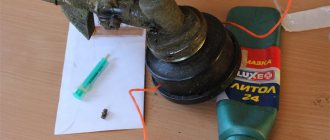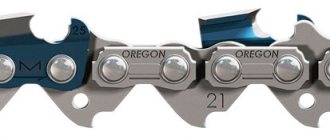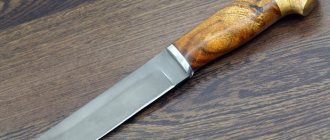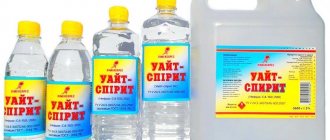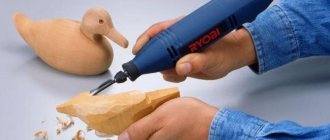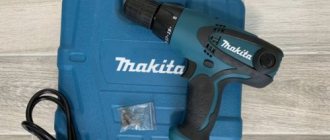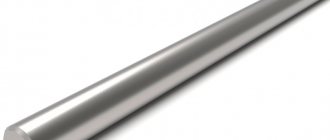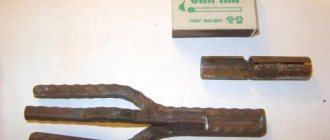The quality of the weld is determined not only by the craftsman’s ability to properly organize the arc, but also by the special protection of the working area from external influences. The main enemy on the way to creating a strong and durable metal connection is the natural air environment. Isolation of the seam from oxygen is provided by welding flux, but this is not its only task. Different configurations of the composition of this additive with a combination of a protective gas environment make it possible to control the parameters of the seam joint in different ways.
Purpose of flux
A welding consumable of this type is directed into the combustion zone and, depending on the characteristics of its melt, has a protective and modifying effect on the area where the seam is formed. In particular, the material can perform the following functions:
- Creation of slag and gas insulation for the weld pool.
- Endowment of a welded joint with certain technical and physical properties.
- Maintaining arc stability.
- Transfer of electrode metal (or wire melt) to the welding zone.
- Elimination of unwanted impurities in the slag layer.
If we talk about the compatibility of different fluxes for welding with metals, the most common brands have the following purposes:
- FC-9 – steel carbon alloys with low alloying.
- AN-18 – high alloy steel alloys.
- AN-47 – low- and medium-alloy steels characterized by high strength properties.
- AN-60 – low alloy steel used in pipelines.
- FC-7 - used when welding low-carbon steel at high current.
- FC-17 – face-centered high-temperature iron.
- FC-19 – alloys with a high chromium content.
- FC-22 - used to perform fillet weld joints when working with alloy carbon steels.
- 48-OF-6 - used in welding techniques with the connection of high-alloy electrode wire.
Flux compositions
The flux itself, as a rule, is produced in the form of granular powder with a fraction of about 0.2–4 mm. But the content and origin of a given product can be very different and not always uniform. In this regard, the following types of flux for welding are distinguished:
- Oxide. The majority of the content is made up of metal oxides and approximately 10% is the share of fluoride elements. This flux is used to work with low-alloy and fluoride steel alloys. Also, depending on the content, oxide flux compositions are divided into silicon-free, low-silicon and high-silicon.
- Salt oxide. Such powders are also called mixed, since the filling can be equally formed by oxides and salt compounds. This flux is used for processing alloy steel.
- Saline. The presence of oxides is completely excluded, and the basis of the composition is formed by fluorides and chlorides. The intended purpose of salt flux is electroslag remelting and welding of active metals.
For gas welding
Some grades of thin sheet steel, tool steel alloys, and non-ferrous metals are welded in a gas atmosphere. Welding fluxes in the form of pastes, powders or gas in this process contribute:
directly into the weld pool;- on the welded rod;
- on the edges of the metal.
Gaseous fluxes for gas welding (for example BM-1) are supplied to the working area in certain portions using a flow meter. Paste-like additives are applied to the joint. Powders surrounded by gases are more difficult to use. They are evenly introduced into the melt, avoiding being blown up by the gas flow.
Flux manufacturing technology
During the manufacturing process, the flux base (charge) is subjected to several processing procedures, including smelting, granulation, molding and quality testing. Before the production process, the raw materials of the charge are segmented into small, medium and large. Each batch undergoes thorough washing and drying, since the purity and accuracy of the parameters of the future flux are maintained from the very beginning. Then weighing, dosing and mixing with other technological components are performed. Melting and granulation of flux for welding is carried out using special equipment - gas-flame or electric arc furnaces, pools for pouring cold water and metal trays are used. At the final stages of processing, drying and sifting are performed. The flux that has passed the inspection is packaged in special bags or boxes with fire-resistant properties.
GOST requirements for flux
Regulatory requirements affect several areas for assessing the quality of flux, and also regulate safety rules when handling the material and methods for testing it. As for the main parameters, the following requirements apply to them:
- Grains whose size exceeds 1.6 mm are excluded from the flux powder. The percentage of their content should not be more than 3% of the total mass.
- It is allowed to produce flux with a fraction of up to 0.25 mm, if this condition was initially agreed upon with the consumer.
- Also, by agreement with the consumer, it is permissible to produce material with a grain fraction from 0.35 to 2.8 mm, but only in relation to the AN-348-A grade.
- The humidity of fluxes, depending on the brand, should not exceed a coefficient of 0.05 to 0.1%.
As for safety requirements, personal protection measures are the main subject of GOST regulation. Submerged arc welding must be carried out in accordance with fire safety measures. The concentration of the flux powder used, which by default is considered chemically hazardous and industrially hazardous, must be separately controlled.
Activity
An important characteristic of flux composites is the conventional unit Af - the activity of the welding flux. Its values fall within the range from 1 to 10. The higher the number, the more active the additive is. Fluxes with high activity are characterized by an indicator value from 0.6 to 1.
When flux components interact with slag, chemical displacement of some elements by others, mechanical mixing, or two processes simultaneously occur.
The intensity of flux penetration into the welding zone depends on the welding mode and flux activity. With a skillful combination of parameters and the correct selection of all materials, the task is accomplished.
Fused and unfused flux
The content of the melted powder is mainly formed by slag-forming components. They are produced by fusing the constituent elements, including quartz sand, manganese ore and chalk. By mixing them in certain proportions followed by melting in furnaces, it is possible to obtain a seam modifier with a certain set of characteristics. Submerged arc welding produced by a non-fused method is more functional. This is a mixture of granular and powder materials, which, in addition to the slag-forming base, also include alloying elements and deoxidizers. The absence of a melting operation makes it possible to introduce metal dust and ferroalloys into the flux, which will open up the possibility of improving compounds.
Classification
Fluxes are a large group of multifunctional mixtures. They differ in a number of characteristics that form the basis of the classification. Classes are conditional.
According to the method of production, compositions are divided into mixtures obtained by fusion, mechanical mixing and gluing. The latter compositions are called ceramic.
Welding fluxes are transparent, similar to glass, and porous, opaque, similar to pumice. For obvious reasons, the density of the porous composition is less than that of the glassy one. Melting is carried out in furnaces at temperatures reaching 1500 °C.
Inorganic substances and their mixtures are subjected to fusion. Most often used:
- silicon oxides (silica);
- samples of manganese ores;
- fluorite (fluorspar);
- magnesium carbonate (caustic magnesite).
The melts are poured into the solution. After hardening, this welding flux forms granules. Hydrophilic substances that tend to absorb water are granulated dry according to a separate technological scheme.
Bonded welding fluxes, similar to ceramics, are used widely, much more often than mechanical powders. Ceramics does not react to rust residues, scale in the working area, or the presence of traces of water there. If the ceramic mixture is added to the vitreous mixture, you can get a perfect seam even on uncleaned metal.
Fluxes have different chemical natures. They consist of oxides, salts, mixtures of oxides and salts.
Types of submerged arc welding
Using flux, both manual and automatic welding can be performed - the fundamental difference will depend on the equipment chosen. Electric arc welding is performed in self-regulating mode or with the support of automatic voltage control. It is optimal to use inverter units supplemented with wire feed drums. Welding with flux without gas is also common, which by default acts as a protective medium from oxygen and nitrogen. What is good about technology that eliminates this barrier to negative impact factors? Firstly, provided that a suitable flux is selected, it will be able to perform the entire list of protective and auxiliary tasks in relation to the seam being formed. Secondly, the absence of a gaseous environment facilitates the organization of the process itself. There is no need to prepare a cylinder with an argon-carbon dioxide mixture, and also to protect the welding area from excessive thermal effects when using a torch.
Operating principle
A typical welding zone at a steady stage of the process includes the following areas:
- Arc column zone with an internal temperature of at least 4000...5000 °C.
- The zone of a gas bubble, which is formed due to intense atomic evaporation of components in an oxygen environment.
- Melted slag, which, being lighter than metal, is located in the upper part of the gas cavity.
- A layer of molten metal at the bottom of the cavity.
- A slag crust that forms the upper, hard boundary of the welding zone.
In addition, the welding wire also makes its contribution to the behavior of the metal being welded. Thus, with all types of welding, the usual metallurgical process of producing metal is simulated in miniature, but without a protective coating and a clear extension, which in the first case is limited by the volume of an open-hearth or electric furnace.
It is possible to protect the welded metal from oxidation and slag crust, which deteriorates the quality of the finished weld, by using a continuous supply of low-melting and at the same time chemically inert components into the welding zone. They are welding fluxes. They can also be used for surface surfacing purposes. The use of fluxes reduces the level of dust that always forms during welding. When using these materials, the following conditions must be met:
- Welding flux should not reduce welding productivity, but, on the contrary, stabilize it;
- The material should not enter into chemical reactions with both the base metal and the metal of the welding wire;
- Throughout the entire operating cycle, the welding bubble zone must be isolated from the environment;
- After the process is completed, flux residues, binding to the slag crust, should be easily removed from the processing zone. In this case, up to 70...80% of the flux material can, after appropriate cleaning, be used again for welding.
These requirements are quite complex and contradictory, therefore the optimal composition and technology for supplying welding fluxes is determined for the specific type of welding, the configuration of the metal parts being joined and the performance of the process.
https://www.youtube.com/watch?v=f65tHnkNnrU
Flux application technique
After igniting the arc, the operator must maintain it between the end of the electrode and the workpiece under the flux layer. The powder is poured in a layer of 55-60 mm, after which the arc should be literally drowned in this mass until it melts. With an average flux weight, its static pressure on the metal can be about 8-9 g/cm2. This value is sufficient to eliminate unwanted mechanical effects on the weld pool. When using wire for welding with flux, you can achieve minimal melt spatter. This condition is met by ensuring stable contact of the melt zone with the melting wire and flux, as well as by regulating the current strength. Gas protection is also not required in this case, but power control will be especially important. As a rule, a combination of wire and flux is used when welding with high-density current, therefore the machine must be selected taking into account maintaining a constant speed of direction of the electrode thread.
For automatic welding
Many metals are welded using automatic equipment. Select the appropriate electrodes, set the mode, select welding fluxes and solder.
The flux additive is placed on the working surface in a layer up to 80 mm thick and up to 100 mm wide. The molten mass consists of half metal, and the rest is flux. Excess flux is automatically sucked off and then reused. Typically, a silicate additive is used in a mixture with oxides of calcium, magnesium, and aluminum.
The welding flux marked AN 348a has proven itself well. It helps stabilize the arc and reduce the release of toxic gaseous products.
AN series fluxes have high electrical conductivity due to the presence of titanium oxide in them. The abbreviation AN indicates that the composition was developed at the Institute of the Academy of Sciences. There is marking based on the chemical composition of fluxes, but in practice it is rarely used.
Advantages of using flux
The use of flux, of course, has the best effect on the formation of the seam, since the negative factors of the work process in open air conditions are minimized. The obvious benefits include reduced defects in the joint area, minimized spatter and more efficient arc control with full automatic control capabilities. What is also very important is that the submerged arc welding area is always visible to the operator. This allows you to make timely adjustments to the process if necessary, and in some cases even do without a special mask.
Disadvantages of using flux
The weaknesses of this technology are determined by higher requirements for equipment, since more power is required to effectively melt the flux. Today, special modifications of machines for argon arc welding in a flux environment are produced, which have special equipment for its preparation and supply. It is logical that such models cost 15-20% more. Another disadvantage is associated with the increase in the melt zone. Although it can be controlled within certain limits, it is problematic to spot-process small elements under such conditions.
